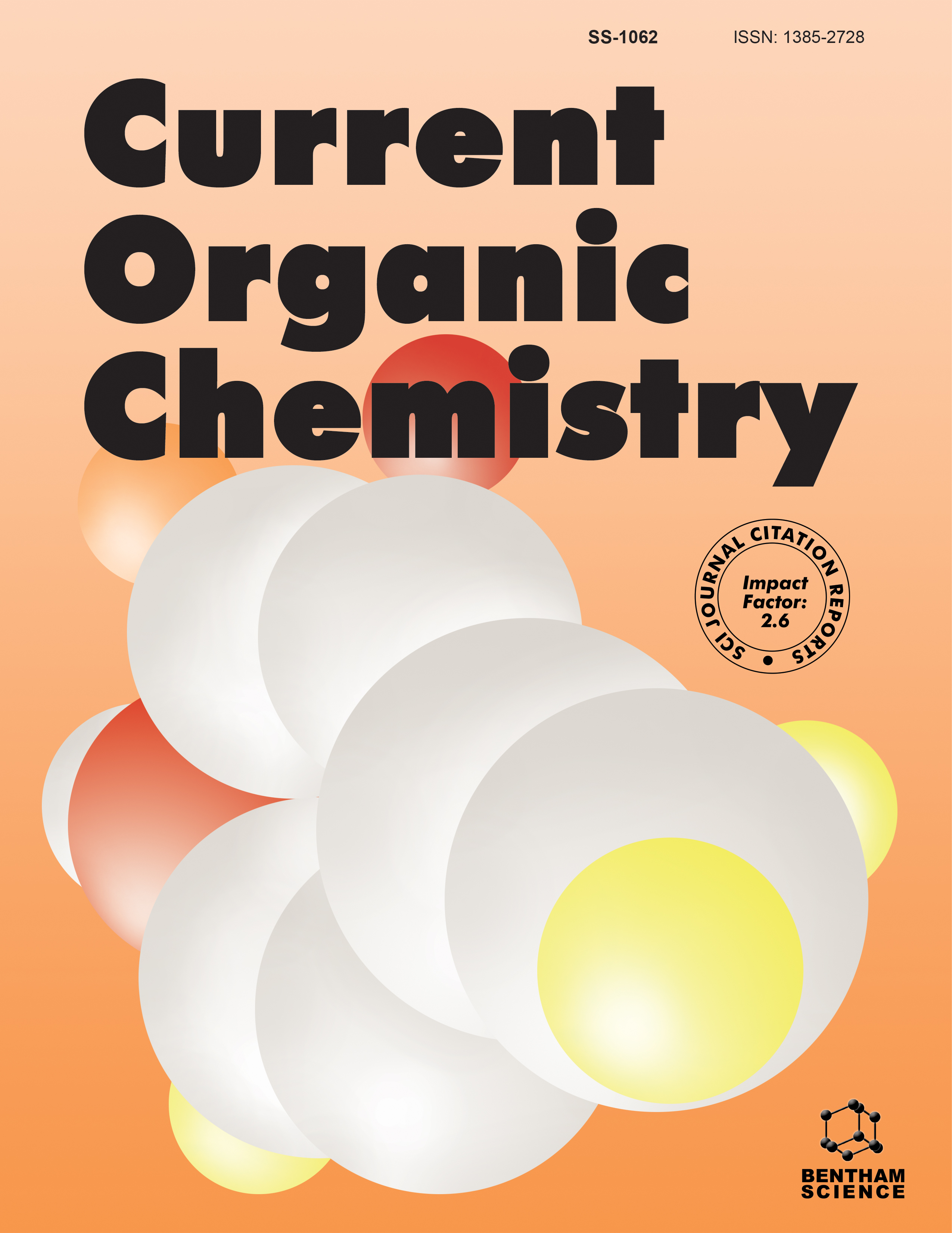- Home
- A-Z Publications
- Current Organic Chemistry
- Previous Issues
- Volume 29, Issue 3, 2025
Current Organic Chemistry - Volume 29, Issue 3, 2025
Volume 29, Issue 3, 2025
- Chemistry, Organic Chemistry
-
-
-
Current Status and Applications of Gamma Radiation-induced Graft Copolymerized Chitosan
More LessChitosan (CS) is a natural polymer obtained by removing acetyl groups from chitin through alkaline hydrolysis. It possesses biodegradable properties and exhibits immunological, antibacterial, and wound-healing activities. This polysaccharide has undergone modification through radiation-induced graft copolymerization to broaden its application scope. The potential applications of CS can be expanded by intr Read More
-
-
-
-
Catalytic Syntheses of Pyrano[3,2-c]Quinolone and -Quinoline Derivatives and their Potential Therapeutic Agents
More LessPyrano[3,2-c]quinolone and pyrano[2,3-c]quinoline, as promising molecules, have garnered more attention due to their interesting biological properties. This review dealt with the catalytic synthesis of the former candidates in the last 20 years. Multi-component reactions (MCRs) are synthetic routes that produce a single product from three or more reactants in a one-pot step procedure. We herein reported on the ad Read More
-
- Chemistry, Organic Chemistry
-
-
-
Co(II) and Cu(II) Porphyrins Catalysed the Synthesis of Quinoline and Naphthoxazine via Dehydrogenative Reactions
More LessAuthors: Danish Khan, Pragati Kushwaha, Iram Parveen, Nirma Maurya and ShailyIn this study, we developed a facile Co (II) and Cu (II)-porphyrin catalytic system for dehydrogenative coupling reaction of benzyl alcohol with acetophenone derivatives for quinoline synthesis and intramolecular cyclisation of Betti base for naphthoxazine synthesis. Functionalized porphyrins containing ester and quinoline ring (CoTPPBenzo(NPh)) and (CuTPPBenzo(NPh)) were synthesized and confirmed via vari Read More
-
-
-
-
[DBUH][HSO4]-catalyzed Solvent-free Synthesis of 1,5-benzodiazepine Derivatives: Bioevaluation and In silico Molecular Docking Study
More LessHere, we report the solvent-free one-pot multicomponent synthesis of 4-substituted-1,5-benzodiazepine derivatives from O-phenylenediamine, aromatic aldehydes, and dimedone using [DBUH][HSO4] as a catalyst in excellent yields. This process was carried out in search of a reusable, easily accessible, affordable, and efficient catalyst. 1,5-Benzodiazepines demonstrate a new family of good inhibitors with potent anti-mycobac Read More
-
-
-
Synthesis of Pregna-1,4,16-triene-3,20-dione from a Mixture of Soybean Phytosterols using a Combination of Chemical and Microbiological Methods
More LessIn this paper, we present an efficient procedure for the transformation of a soybean phytosterol mixture into pregna-1,4,16-triene-3,20-dione, which is a key intermediate for the synthesis of valuable corticoids. The possibility of using two alternative methods for 1(2)-dehydrogenation of pregna-4,16-diene-3,20-dione-chemical and microbiological was shown. Microbiological 3-keto-4-ene steroid 1(2)-dehydrogenation was Read More
-
Volumes & issues
-
Volume 29 (2025)
-
Volume 28 (2024)
-
Volume 27 (2023)
-
Volume 26 (2022)
-
Volume 25 (2021)
-
Volume 24 (2020)
-
Volume 23 (2019)
-
Volume 22 (2018)
-
Volume 21 (2017)
-
Volume 20 (2016)
-
Volume 19 (2015)
-
Volume 18 (2014)
-
Volume 17 (2013)
-
Volume 16 (2012)
-
Volume 15 (2011)
-
Volume 14 (2010)
-
Volume 13 (2009)
-
Volume 12 (2008)
-
Volume 11 (2007)
-
Volume 10 (2006)
-
Volume 9 (2005)
-
Volume 8 (2004)
-
Volume 7 (2003)
-
Volume 6 (2002)
-
Volume 5 (2001)
-
Volume 4 (2000)
Most Read This Month
Article
content/journals/coc
Journal
10
5
false
en


